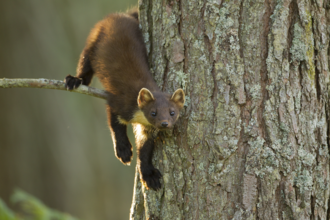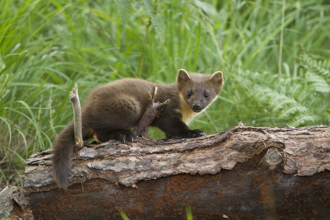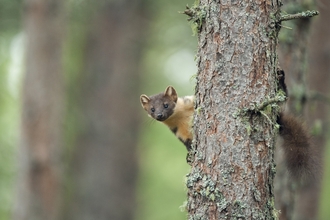In September 2025, 19 pine martens (9 female, 10 male) were successfully released at secret locations across Exmoor. This marks the return of a species once common locally and is the second phase of the Two Moors Pine Marten Project, building on last year’s successful reintroduction to Dartmoor.
The small cat-sized animals were once common in the South West but fell victim to the loss of their favoured woodland habitat and to human persecution.
So how do we bring pine martens back to where they belong?





